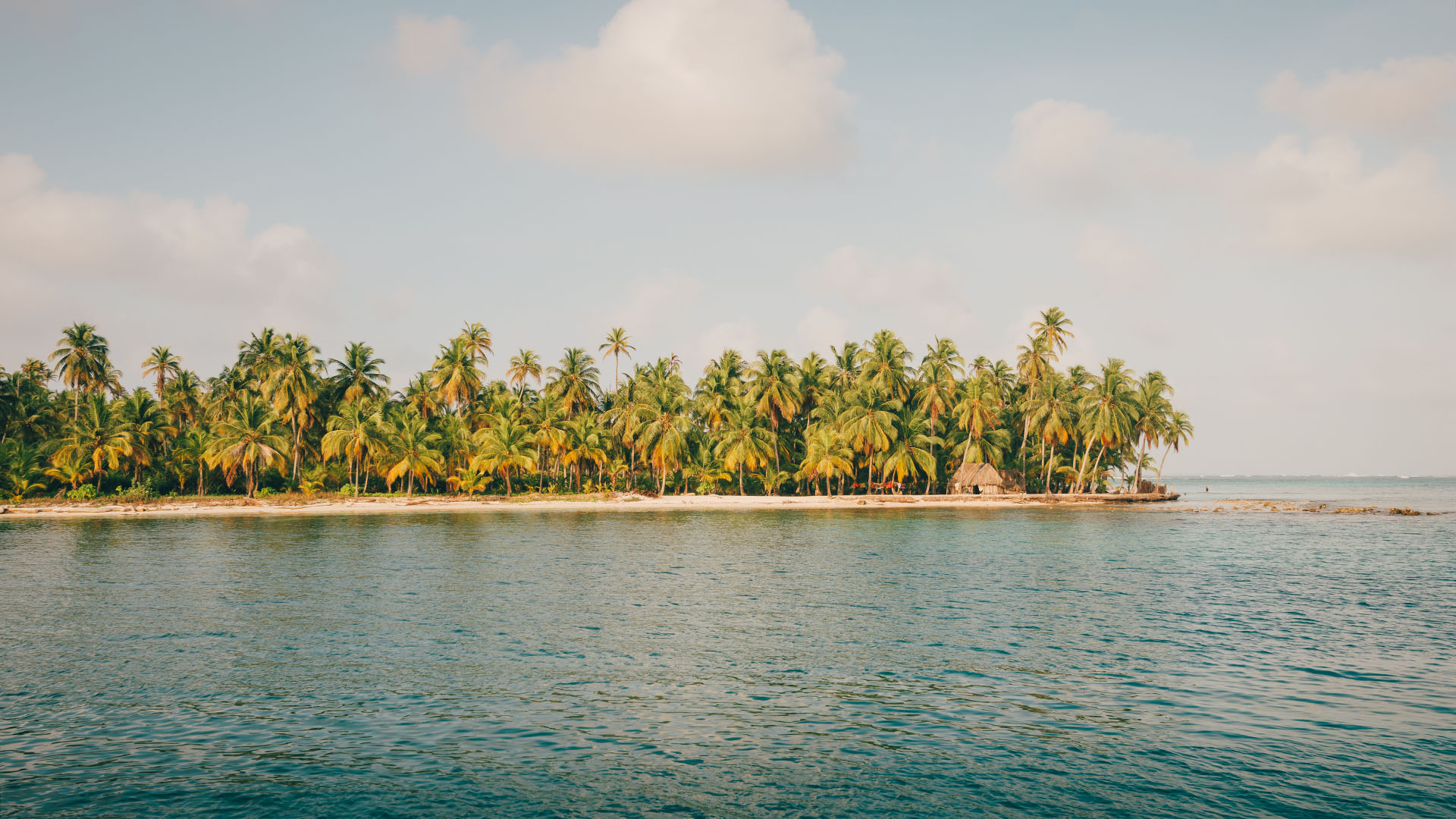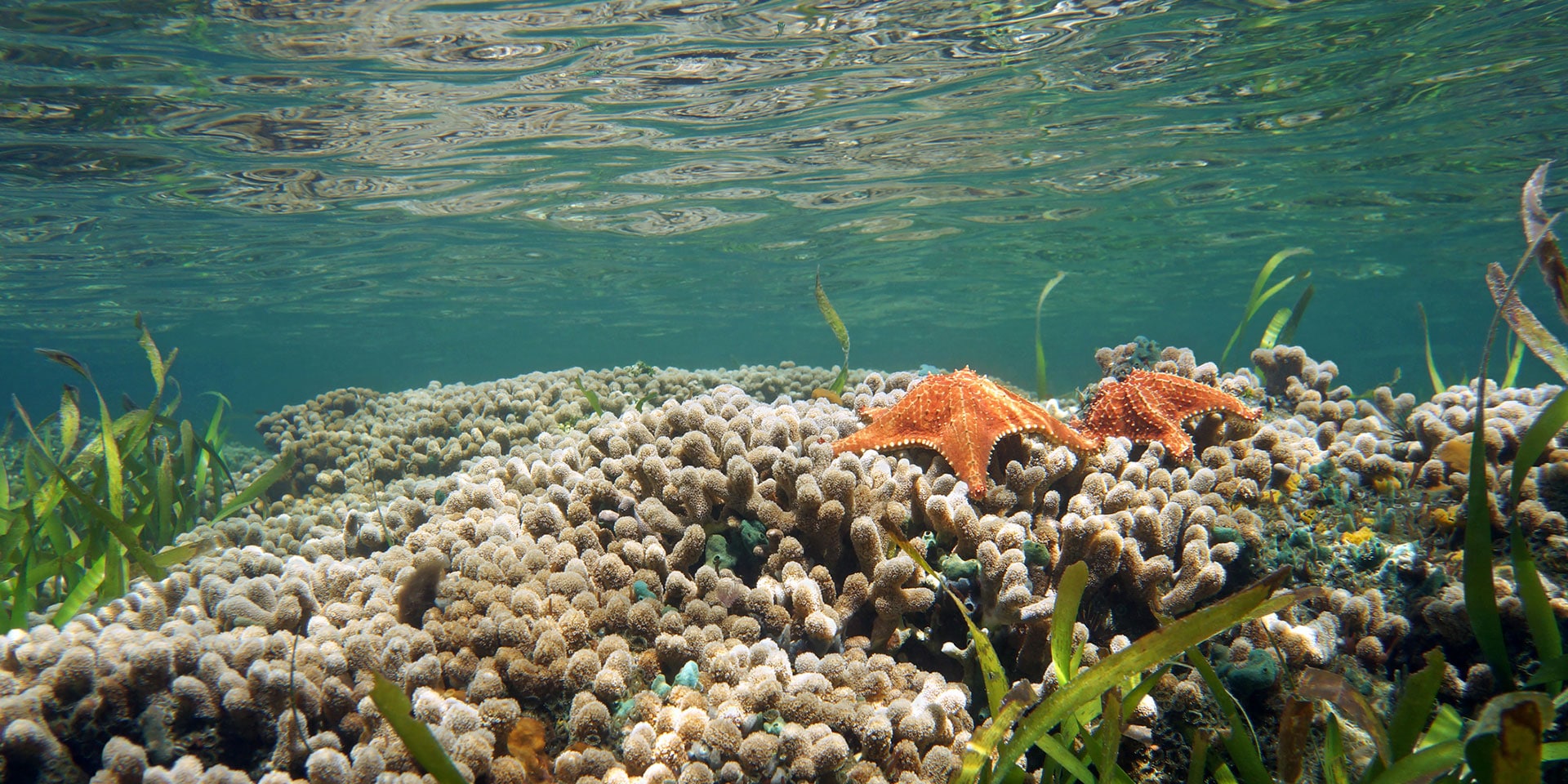Scattered along the Caribbean coast of Panama, the 365-plus islands of the Comarca de Guna Yala are pared down tropical perfection: sand, sea and palm trees complete with a thatched hut or two.
What makes the archipelago even more intriguing are the indigenous Guna Yala; an autonomous people who have held tight to a traditional way of life that’s reliant on nature for their basic needs.
With limited modern amenities available, visitors to the islands get to enjoy coral reefs, sunken shipwrecks, white sand beaches and the freshest seafood possible. The best part is these remote-seeming islands are closer than you might think.
Guna Yala can easily be reached as a day trip from Panama City. Flights or 4×4 vehicles take you from the city to coastal communities like Playon Chico or the Port of Carti. Here, water taxis wait to transport you to the islands just in time for a mid-morning swim.
Once there it’s up to you to decide what kind of adventure you’re after; relax on an isolated beach, snorkel a healthy reef, learn more about the culture, tuck into a seafood feast or set out on a cruise through the islands and do a little of each.

Explore the Islands
If you’ve ever wondered how many shimmering shades of blue there are in a tropical lagoon, Turtle Island is the place to head.
Rising a meter above the sea and measuring just 168 meters at its widest point, the island has one thatched house, a beach, dozens of coconut palms, a machine that runs the island’s fridge and an endless expanse of ocean to observe.
Uninhabited except for the caretakers who serve up drinking coconuts and fish dinners to order, there’s blissfully little to do here except swim, walk around the island and watch the fishermen glide by in their dug-out cayucas.
Swim With the Fishes
Comprising over 600 km2, Guna Yala’s coral reef system is considered one of the best preserved in the world. Just about anywhere you snorkel (no SCUBA is permitted) you’ll encounter vibrant marine life including manta rays, moray eels, turtles and reef fish as well as hard and soft corals, sponges and fans.
On Isla Perro you can even explore the old navy gunboat that’s located in shallow water a short swim from the beach.

Discover Traditional Art
Molas (which translates to ‘clothes of the people’) are intricate hand-sewn panels representing the animals and symbols that are sacred to the Guna people. Choosing a mola is really about taste—and part of the fun is sorting through the colorful options with the artist and learning how they’re made.
In the waters around Isla Chichime, you may be lucky enough to encounter master mola makers Venancio or Lisa. Both these artists are happy to share the rich history of the mola and explain some of the complex patterns which use tiny, near-invisible stitches. Longer tours can even include mola making classes.
Sample the Seafood
Rather than having restaurants, Kuna families often open their homes and charge a small fee for meals made to order from simple fresh ingredients. Vegetables come from mainland gardens, coconut milk comes from the islands’ famous trees while fish and lobster are caught each day.
Try the red snapper with coconut rice or a grilled lobster with plantains. Those who want to be more involved in their meal can hire a Guna fishing guide (fishing is only permitted with a guide) and catch their own fish using traditional techniques.
Learn the Pleasures of Island Hopping
Hire a water taxi for a multi-island tour or travel by cayuca. While it can take a full day to travel from one island group to another by cayuca, paddling the dugout canoes’ shorter distances is a fantastic way to get into the rhythm of the islands.
You’ll glide over a kaleidoscope of blue and may stop at a small village for lunch, an isolated island for a swim or head out to a reef for a snorkel. While many Guna speak some Spanish or English, use this opportunity to establish a connection by trying a basic greeting like “na” (hello), or “bede nued guddi” (how are you).




